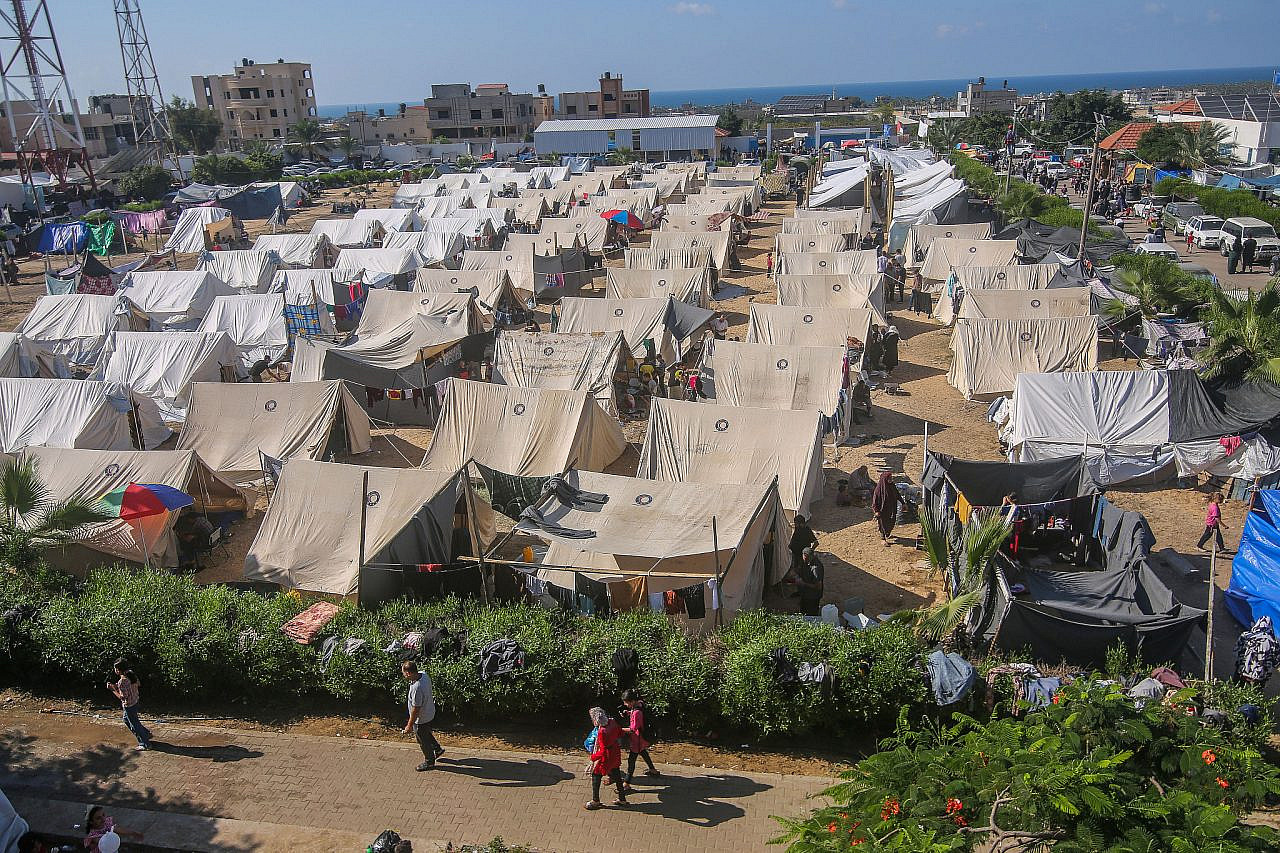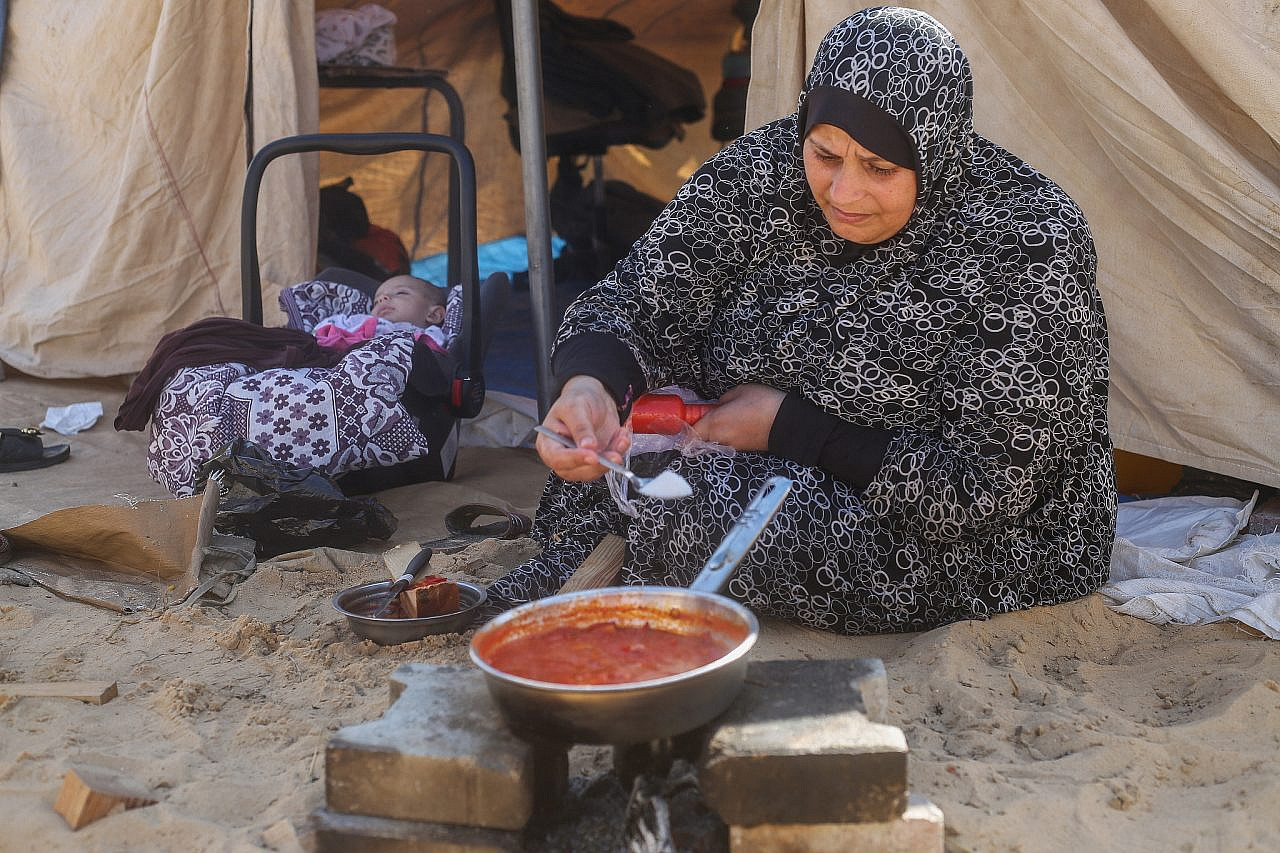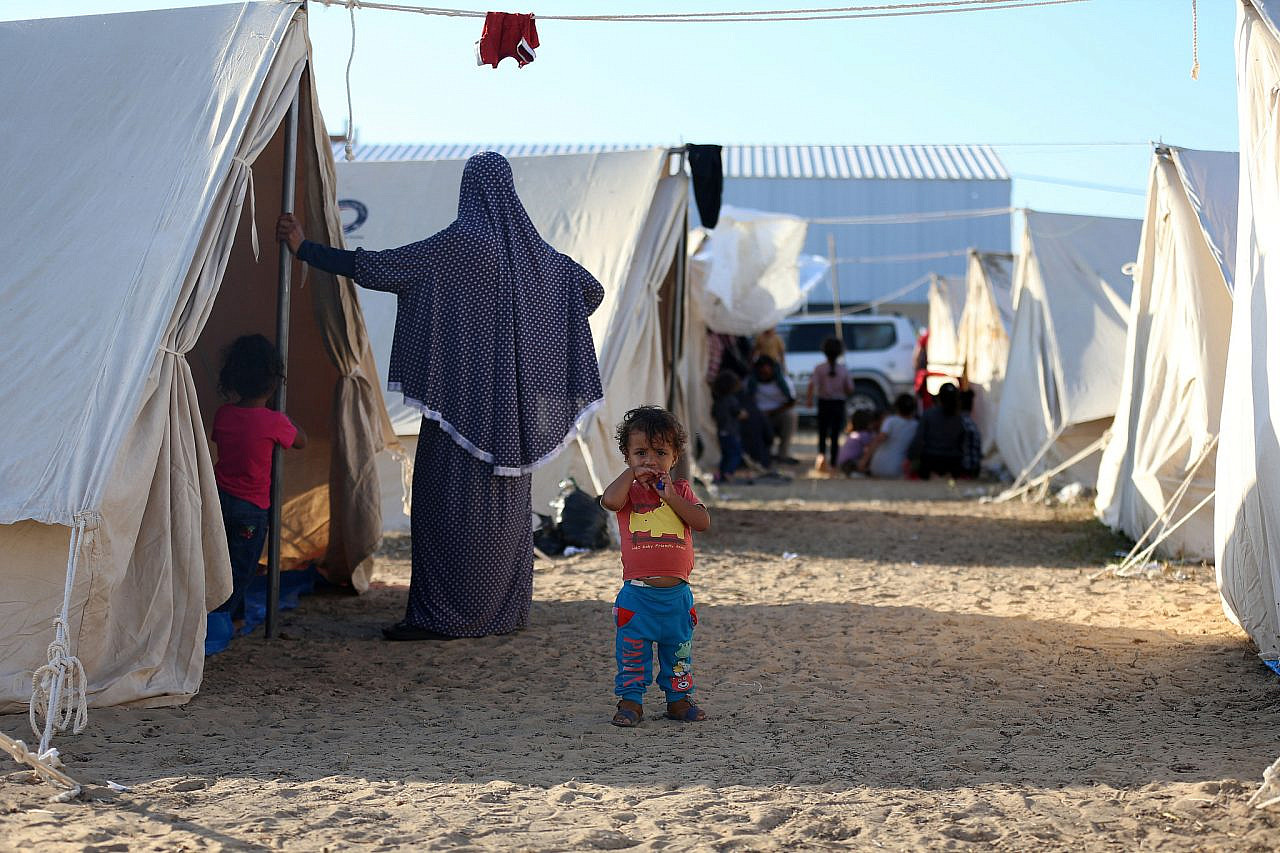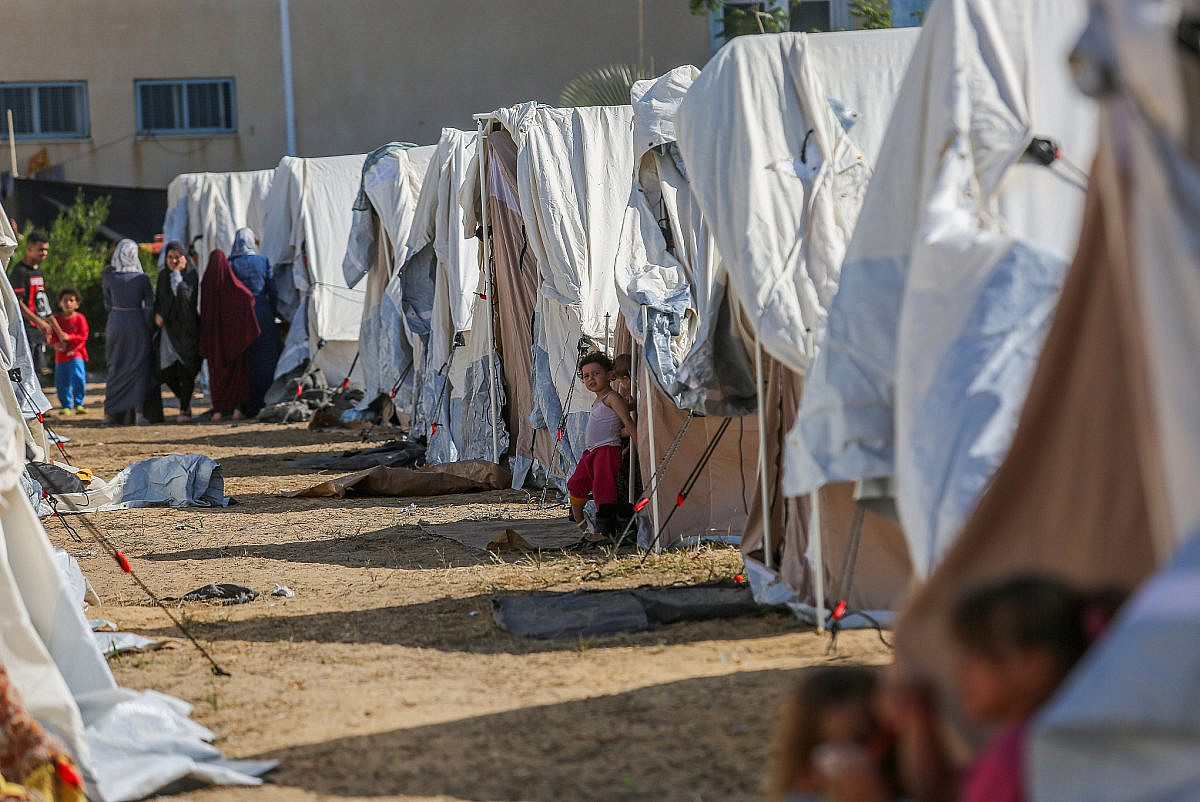In scenes eerily reminiscent of the conditions of Palestinian refugees following the Nakba of 1948, a tent city has sprung up in recent days in the western part of Khan Younis, in the southern Gaza Strip. More than 100 UN tents have been set up in what used to be a city square, providing temporary shelter for around 800 people who were displaced from their homes amid Israel’s bombardment of Gaza in the wake of Hamas’ Oct. 7 attack.
While everyone in Gaza is facing severe shortages of food, water, and electricity, those living in the tents are among the worst affected by Israel’s attacks and intensifying siege. Residents of the encampment are surviving on the limited aid provided by locals and a few civil society organizations.
It is not altogether clear how the tent city came into being. Salama Marouf, the head of Hamas’ media office, admitted in a press conference last week that Hamas was surprised when the encampment sprung up, which he criticized as an echo of the refugee camps of 1948. Taking aim at the UN Relief and Works Agency (UNRWA), which has handled the humanitarian affairs of Palestinian refugees throughout the region since the Nakba, Marouf declared: “UNRWA’s role is not to set up tents for those who are displaced inside Gaza in preparation for their displacement outside the strip.”
But while confirming that the tents are theirs, the UN agency has denied setting up a new refugee camp. “UNRWA has distributed the tents to displaced families in Khan Younis to protect them from the rain and provide dignity and privacy,” Juliette Touma, UNRWA’s director of communications, told +972. “We wish to confirm that UNRWA has not established any new camps in the Gaza Strip.”
Fadwa Al-Najjar arrived at the encampment on Friday. Standing in front of her tent, close to some carts selling canned food and cooking utensils, the 40-year-old mother of seven recounted the horrors of her journey from the north of the strip to Khan Younis following Israel’s orders to evacuate.

Al-Najjar was displaced along with 90 of her relatives, all of whom lived together in one residential building in northern Gaza. The 30 kilometer journey south took 10 hours by foot. “We tried to rest on the way, but the bombing was intense, so we had to keep moving,” she recalled. “Israel bombed cars in front of us that were carrying displaced people. We saw bodies and limbs everywhere. It was like doomsday. We recited the Shahada because we were scared we’d be killed. I’ll never forget it.”
Sherine Al-Dabaa, 36, is living in a tent in the encampment with more than 15 family members, after they fled their home in Shujaiya, eastern Gaza City, on Oct. 15. “We couldn’t find a place to stay, so we gathered here,” she said. “This place is not safe, and the sounds of bombing day and night terrify the children. We feel like we could die at any moment.”
Conditions in the tent city, Al-Dabaa explained, are tough. “We make a fire to have some light at night and to cook during the day. The weather at night gets very cold and the children cannot bear it — they need blankets. We left our house without anything. We need water to wash our hands. We haven’t even showered since the beginning of the war.”
Despite the associations with the Nakba, however, Al-Dabaa is defiant: “This is not a refugee camp, and we refuse to call it that. It is a temporary solution until we can return to our homes.”

Karam Tabsh, 44, is also staying in a tent after fleeing his home in Beit Lahia, at the very north of the strip. “I hardly got to enjoy the renovations we had just completed on my home,” he lamented. “I left it behind and fled in order to save my six children from the bombing.
“I didn’t flee very far [at first],” Tabsh continued. “We went to the UNRWA school in the center of Gaza City so we would be able to return home quickly. But it became impossible when they ordered us to move to the south of the Gaza Strip.”
Arriving in Khan Younis, Tabsh and his family didn’t know where to go. “I have no friends here or any family in the area. I told my wife that we should go to the UNRWA school, where I thought we would meet people who could help us, but all of the schools were already crowded.”
Eventually, among the many displaced people wandering around Khan Younis, Tabsh met someone else from Beit Lahia who informed him about the tent encampment. “I found a person I know who told me there are people in the west of Khan Younis staying in tents,” he explained. “I couldn’t imagine staying in a tent with my children, but we are in a war. I have to protect my children — we can’t live on the streets.

“I am a farmer, and I used to work on my land from the early morning hours until the evening,” Tabsh went on. “I never thought that I would be displaced in this way. In every war in the past, I would go to shelter in schools for a few days and then return. But this war is more painful — it has forced us to flee farther than before.”
Adnan Abu Hasna, UNRWA’s spokesperson in Gaza, explained that UNRWA is struggling to cope with the dire humanitarian situation developing in the strip. “UNRWA was initially providing aid to 150,000 displaced people; now there are 1 million,” he said. “UNRWA does not have the capacity to aid or provide services to this many people, especially under the conditions of war.”
UNRWA buildings and infrastructure throughout the strip have been damaged and destroyed by Israeli airstrikes, particularly in the north and around Gaza City. The destruction of UNRWA facilities is fueling the humanitarian crisis and is a major reason for the need to have tents in Khan Younis; for many, there is simply nowhere else to go.

